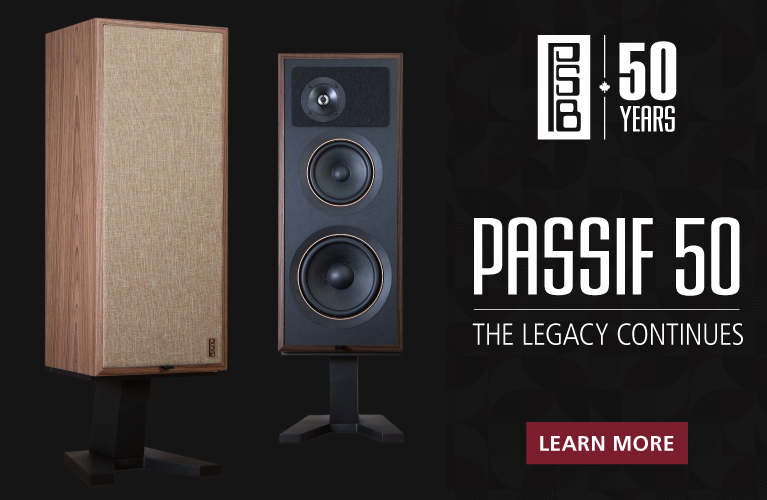Note: for the full suite of measurements from the SoundStage! Audio-Electronics Lab, click this link.
 “I’ll never make a phono stage,” Ed Meitner told me with flat finality. The fact that I was in the midst of a Skype call with Ed and his son, Amadeus, to discuss EMM Labs’ DS-EQ1 optical phono preamplifier was packed with an irony we were all studiously ignoring.
“I’ll never make a phono stage,” Ed Meitner told me with flat finality. The fact that I was in the midst of a Skype call with Ed and his son, Amadeus, to discuss EMM Labs’ DS-EQ1 optical phono preamplifier was packed with an irony we were all studiously ignoring.
But as our discussion continued, it became clear to me that Meitner the senior views the DS Audio optical cartridge series (see my review of the DS 003 System) as so far above the archetypal magnetic cartridge that they’re not even the same species. So it’s not vinyl that Meitner holds in disregard, it’s the magnetic cartridges employed to scrape off its signal.
Meitner had kept his records, you see, but he no longer played them, viewing DSD specifically and digital in general as far superior playback sources. He’s spent a lifetime working with digital audio, riding far, far ahead of the wave with products like the Museatex Bidat DAC, originally produced in the late 1980s, and he’s moved forward with DSD as his touchstone.
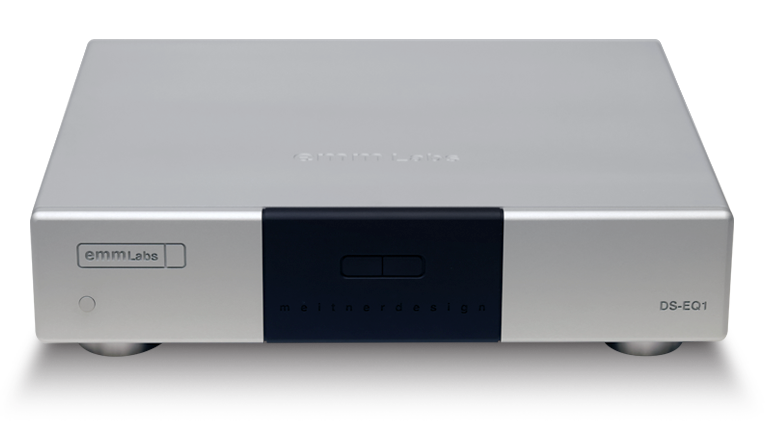
At the time of this call, I’d just finished my review of the DS Audio DS 003 System, which consists of the DS 003 optical cartridge and DS 003 phono preamplifier, and I was seeking some insight into the DS-EQ1 optical preamplifier—the subject of this review—which, at first glance, seemed like a bit of an odd duck amidst EMM Labs’ DACs, transports, SACD players, amplifiers, and preamp.
EMM Labs, along with its more affordable sister company, Meitner Audio, has kept its focus on digital audio and also offers a preamp and amplifiers to round out a complete system. And true to Meitner’s worldview, there’s been no phono preamplifier up to this point.
But after investigating and listening to the DS Audio cartridges, Meitner was impressed and intrigued. He dusted off his records and started listening to a sample. The technical and audible improvements over magnetic cartridges upended his worldview.
“Where does vinyl now stand in your order of preferred formats?” I asked him.
“DSD is at the top,” he responded. “Nothing is better. Next comes vinyl. And after that, PCM.”
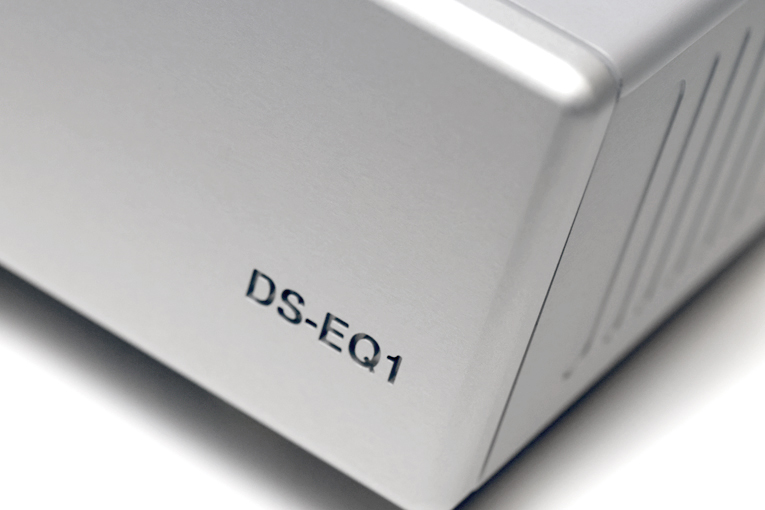
So after listening to a number of different DS Audio cartridges and being right impressed, Meitner decided to build his own optical phono preamp. Meitner stressed that this was no whim—the DS-EQ1 is a full-on EMM Labs product that’s taken three years to bring to market, one that will receive updates when available and one that stands shoulder-to-shoulder with the company’s other source components. Further reinforcing Meitner’s enthusiasm for and commitment to the DS Audio optical cartridges, Meitner Audio has just released the DS-EQ2 optical phono stage. I just so happen to have received one of the first samples to roll off the assembly line, so stay tuned for the full review.
Maybe I’m flattering myself here, but during this conversation, it felt as if Meitner and I had a shared understanding, given that we’d both been smitten by the astounding sound quality of the DS Audio optical cartridge system, which uses an LED shining on a photo receptor, modulated by a shading plate attached to the cantilever, to generate an electrical signal.
Over my lifetime, working in computer systems (yeah, I know—COBOL programming isn’t exactly cutting edge, but I interact with a number of other technologies), I’ve been consistently drawn to open source solutions. I use an Android phone, one of my laptops runs the Ubuntu operating system, and I use Libre Office instead of Microsoft’s suite. My digital audio system runs off the Logitech Media Server software. All of these are open source operating systems and programs. The code is readily available, and anyone can make their own version or help to improve the functionality.
So DS Audio makes optical phono cartridges, and it also makes its own matching phono stages. The optical phono cartridges are massively proprietary. DS Audio is a subsidiary of Digital Stream, a company that co-developed the optical mouse and USB technology. Digital Stream has huge experience with optical technologies. This know-how enabled them to develop the optical cartridge, and it’s unlikely any other company could reproduce this product without massive investment in research and development. So it’s not likely to happen.
But the optical phono stage? Well, in comparison to the development of the optical cartridge, building an optical phono stage is simple—simpler really than a standard phono stage, as there’s much less fussing around with RIAA equalization. DS Audio is completely open about both the power requirements for the cartridge’s LEDs and the signal’s characteristics—it’s open source.
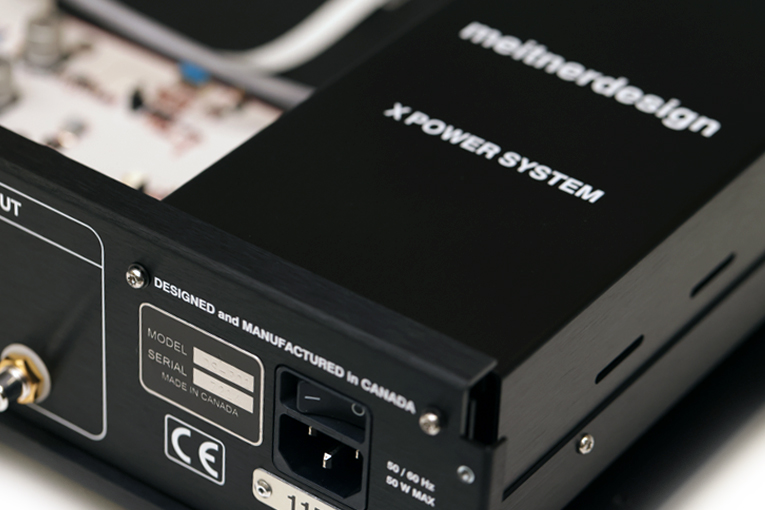
So EMM Labs added its own know-how to the optical phono stage concept, and you’d rightly expect that they’d do an excellent job. The DS-EQ1 employs fully balanced, discrete class-A amplification, with short audio paths on an aerospace-grade ceramic circuit board. EMM Labs paid great attention to the power supply, which is a proprietary switching design. The chassis feels extremely inert, which promises excellent isolation from vibration.
As I explained in my diatribe on the importance of packaging, the DS-EQ1 comes sturdily double boxed. Inside the outer box is another box containing a Kimber Kable PK14 power cord—an Easter egg that made me feel all warm and tingly during the unboxing.
The DS-EQ1 itself is a dense, solid component with a reassuring feel. By reassuring I mean that just by handling this 26-pound box, it becomes immediately obvious that it’s exceptionally well built. The milled aluminum panels are finely bead-blasted—resulting in a silky matte finish—the panels fit precisely together without gaps, and the controls operate with military precision.
Controls are sparse, and—at first glance—the ones that are there might seem inadequate for a phono stage. But, as I went to great pains to explain in the DS 003 review, the DS Audio optical cartridge isn’t compatible with traditional phono stages, and its wildly different operating principle means that none of the traditional phono stage adjustments apply here. I’m not going to reiterate the technical premise by which the DS Audio optical cartridges produce a signal, as the explanation takes up a significant amount of real estate. If you’re interested in this ecosystem, I strongly suggest that you read my review of the DS 003 System.
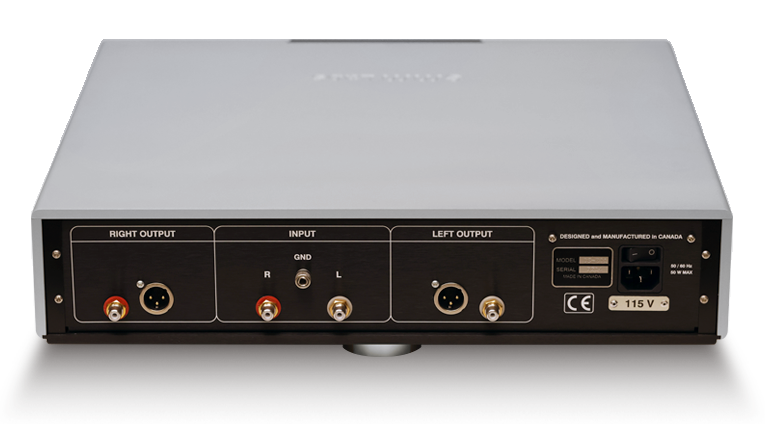
The DS-EQ1’s rear panel offers a power switch, one set of RCA inputs (well, not really just inputs, as these connectors also supply power to the cartridge’s LEDs), a ground connector, and both RCA and XLR outputs. I used the XLR outputs into my fully balanced Sonic Frontiers SFL-2 preamp. Up front, there’s a standby switch and two separate rectangular buttons. One button controls power to the cartridge, which is nice, as that means you can leave the DS-EQ1 powered up all the time and only jazz up the cartridge when you’re ready to listen. The other button switches in a 15Hz high-pass rumble filter.
Since the DS Audio optical cartridges don’t employ magnetic motors, there’s no need for impedance or capacitance adjustability. And as the output across the DS Audio line is a consistent value, adjustable gain becomes redundant. So really, in terms of functionality, the DS-EQ1 feels more like a DAC than it does like a traditional phono stage. (A note to anyone who might misinterpret this—the DS Audio cartridges output an analog signal, and the DS-EQ1 is a fully analog component.)
Setup
I hooked up the DS-EQ1 without consulting the owner’s manual—RCAs in, XLRs out, ground wire, and power using my own Nordost Vishnu cable. Then I pushed the button to power the DS-EQ1 on; it booted right up, the LED illuminated on the DS 003 cartridge, and sound came out of my speakers. As with the DS 003 system before it, the DS 003 cartridge and DS-EQ1 combo worked perfectly and consistently the whole time I had them in my system. Power up and down produced no pops or snaps through the speakers, and the noise floor of the DS-EQ1 was below that of my tubed Sonic Frontiers SFL-2 preamp.
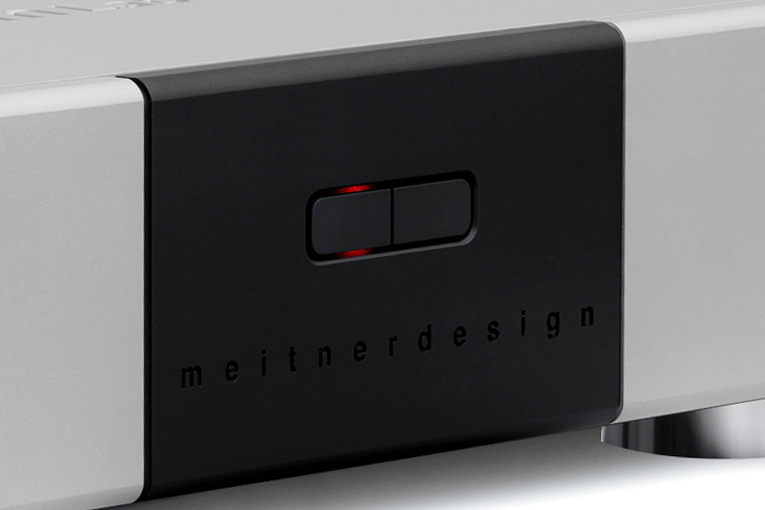
The DS 003 was mounted on my VPI Prime Signature’s JMW Memorial 10″ tonearm, and the signal was carried over to the DS-EQ1 via a Nordost Frey 2 tonearm cable.
Same but better
Having just re-read my review of the DS 003 System, I stand by my almost extraordinary enthusiasm. For six large, the DS 003 System is a smoking bargain, delivering world-class dynamics, imaging, and tonal definition in a manner that goes beyond anything I’ve ever been able to achieve with a moving-coil cartridge.
The DS 003 cartridge with its matching DS 003 phono stage was exciting! This analog front end thrilled me with its speed and resolution, but near the end of the review, I mentioned that it might be a bit too much for listeners more accustomed to a traditional magnetic cartridge.
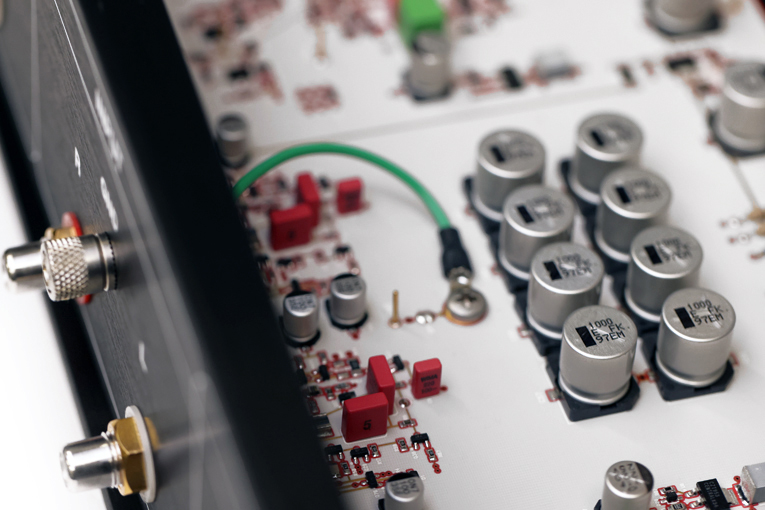
At the time, I was thinking about what exactly the EMM Labs DS-EQ1 would bring to this party, but I really, really needed to get the first review out of the way before settling into this new variable. Still, I had my suspicions that the DS-EQ1 would bring back some of the ease evoked by a traditional moving-coil cartridge.
It took me literally a minute to realize that, yes, the DS-EQ1 is notably more refined than the DS 003 phono stage. This isn’t a knock at the DS 003 phono stage in any way, given that the DS-EQ1’s retail price of $12,500 (all prices USD) is about three-and-a-half times that of the DS 003’s $3500.
A couple of points to consider here before we get into the meat of the review: First off, DS Audio is an optical company. Consumer audio electronics aren’t their meat and potatoes, but that said, they’ve done a magnificent job with the DS 003 phono stage. EMM Labs, on the other hand, breathes consumer audio electronics. In my conversation with Ed Meitner, I was staggered by the scope of his knowledge and the associated history of his involvement in both pro and consumer audio. Meitner has likely forgotten more about audio than most other engineers will ever know.
So it was no surprise to me that the DS-EQ1 quite literally opened up the worlds lurking inside the records I played.
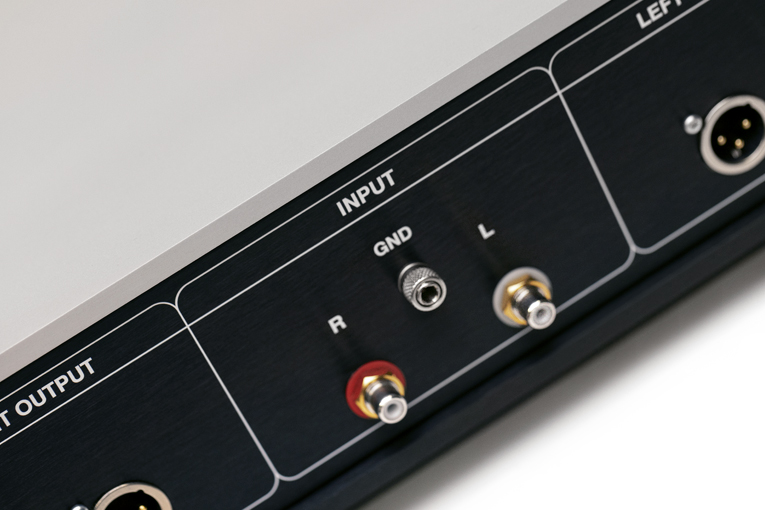
The DS-EQ1’s arrival coincided with my purchase of The Tragically Hip’s Live at the Roxy (Universal Music Canada 4517763), a highly polished version of a bootleg that’s circulated on cassette tape for over 20 years now. This is prime Hip—recorded around the time of Road Apples, a time when the band was still hungry, and still relatively unknown outside Canada. It’s an absolute barn burner, this album. Listening—really, really loud—to “Cordelia,” I heard, and felt, the musicians wrap themselves around me, in a physical embrace that quite literally took my breath away. Live at the Roxy is an immersive recording that manages to be extremely raw yet, at the same time, well recorded. For a live recording, it’s astounding how well the instruments are placed, with cymbals attaining height, and one guitar perfectly situated on either side of Gord Downie’s vocals. This feeling of coherence, of the music having a well-defined whole that I could easily bust down into its individual components, ended up being the defining characteristic of the DS-EQ1.
Tonally, at first listen, the DS-EQ1 seems like it’s a touch more neutral, more restrained, up top than the DS 003. I say seems like because I don’t think this is an amplitude thing. Rather, it’s the result of the DS-EQ1’s control over the signal. It’s a healthy dollop of refinement. “Fight” is one of my favorite Hip songs, and in this live version, Johnny Fay really flails at the cymbals. Listening to this track through the DS-EQ1, I could hear more detail in these cymbal strikes, and I had a better sense of the ringing overtones, each discrete, each snapped off as the next strike started a new cycle of ringing. Through the DS 003 phono stage, the shimmer was still there, along with a great sense of detail. But those overtones weren’t as obvious, they weren’t as harmonically complete.
I recently pre-ordered Music On Vinyl’s reissue of Laurie Anderson’s Bright Red (Music On Vinyl MOVLP2539) without worrying about how much it cost, as this album is a long-time favorite of mine, and one that’s never before been available on LP. But hell—54 Canadian dollars for a single record! With tax that’s $61! This was my first real wake-up call that, yes, inflation is now affecting me. Still, I have the album here at home, and it’s worth every penny. That Bright Red never became an audiophile chestnut in the same way Into the Labyrinth did is a mercy. This album has everything any audiophile could ever want—astounding production, spacey vocals, crisp images—and it’s utterly accessible. But it’s clever, crafty, creepy music, so maybe that’s why it never caught on. Who knows? But listening to it via the DS-EQ1 here in my basement, I was utterly immersed.
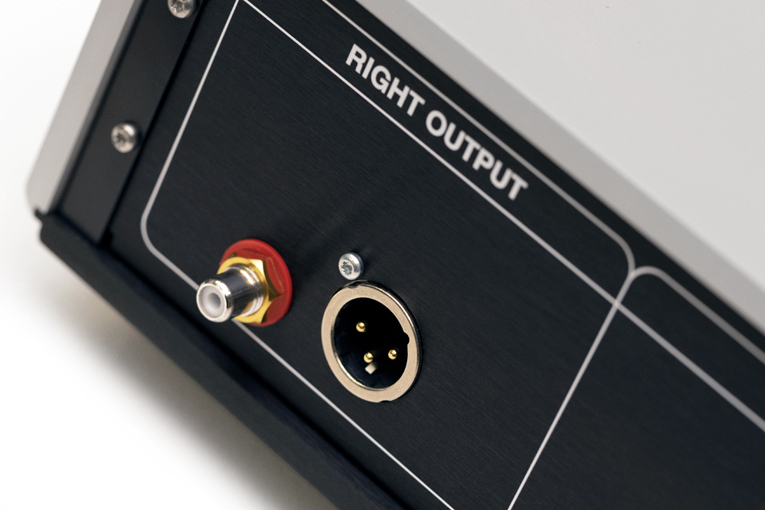
Remember how I said in my DS 003 system review that the bass was merely excellent, but not quite up to the standard set by the rest of the system’s performance? Well, the low-bass information is there, and the DS 003 cartridge can dredge it up—I now know that. With the DS-EQ1 in the system, I was just clobbered by the deep, drop-down bass notes in “Speechless.” Rounded, juicy synthetic rolling low notes filled my room. Wave after wave, redolent with subtle inflections of tone and density. Switching back to the DS 003 phono stage, I got the extension and the pressure waves, but not those inner details—those subtle inflections were hinted at, but not fully realized.
The DS 003 cartridge pulls detail from the record like nothing else I’ve experienced, but the DS-EQ1 felt like it was massaging, purifying, and controlling the signal—taking that raw data and organizing it into a much more coherent signal than that generated by the DS 003 phono stage.
I’m still buying new King Crimson records as they’re re-released, and as I get to them, but I’m also making an effort to consolidate the ones I already own. King Crimson’s boxed set 1972–1974 is incoming, so I was going through my multiple copies of Larks’ Tongues in Aspic to see if there was any dead weight I could jettison. To my delight, I discovered that one of my copies (Atlantic SD 7263 0269) is a first pressing, so after a quick spa visit by way of the VPI Cyclone record cleaner, over to the ’table it went. I often turn to this album when I want to see how well a component can decode complicated music.
Again—loud. I just listened to side 2 twice straight through, loud. The bite of Fripp’s guitar, Bruford’s cymbals, and Muir’s percussion made my eyes water. The DS-EQ1 did nothing to soften the edges of this terrifyingly complicated music. The conclusion of “Easy Money” is an all-out assault that is rather difficult to sit through without actually wincing a bit. Everything’s thrashing around, and the DS 003 System just lashes it out at you. Huge space around the instruments, percussive attack, deep bass—it’s all there. But with the DS-EQ1 there was an additional layer of detail, of precision, in the positioning of each instrument. Sliding into “The Talking Drum,” David Cross’s violin came grumbling in, and it was another physical presence fighting for my attention. The violin inhabits the same position in the speaker plane as Fripp’s nightmare guitar, but the DS-EQ1 kept them distinct via depth delineation, and as they built to the start of “Larks’ Tongues in Aspic, Part Two,” I actually began to sweat.
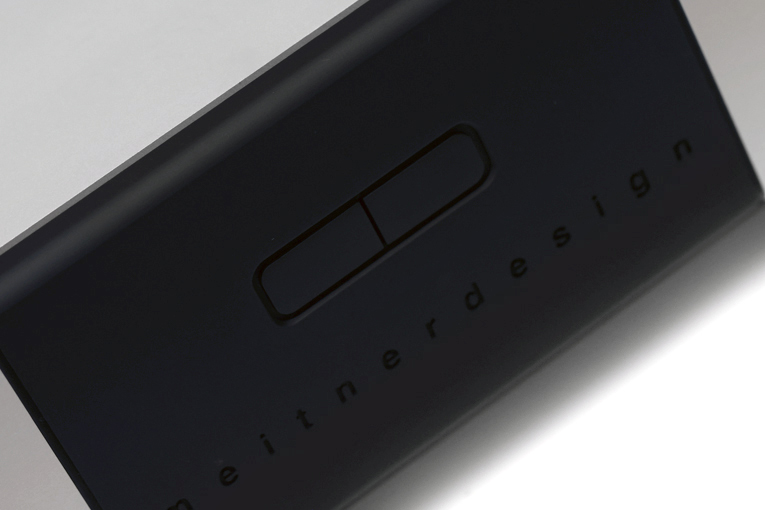
I have to admit I had a similarly visceral reaction to this album through the DS 003 phono stage, but with the DS-EQ1 in the system, I found my eyes unconsciously flitting around, actually looking for the instruments.
There’s a better feeling of front-to-back image placement via the DS-EQ1. Heck—every aspect of the way the DS-EQ1 places images in space is extraordinary. Part of this is the way the EMM Labs DS-EQ1 extracts every granule of texture from an instrument’s image.
Along with that additional level of cohesion of images and frequencies, there’s also a feeling of ease via the DS-EQ1. All that information dredged up by the DS 003 can be a bit disconcerting through the DS 003 phono stage, but the DS-EQ1’s tight control and outright sophistication makes difficult, angular music like Larks’ Tongues in Aspic less, well, distressing to sit through.
As I sit here tidying up this review, I’ve cast my mind back over the past couple months, trying to find any facet of the DS-EQ1’s performance that dissatisfied me in some way. I’ve come up empty in that regard. This component has exceeded every performance metric I can think of. From imaging to the frequency extremes to the meat of how it presents music—all were just fantastic. Build quality? Superb. Packaging? Excellent.
The only aspect that I find irksome is that it’s twelve-and-a-half grand for a silver box. But that’s my parents’ frugality speaking, and in this world of high-end audio, that’s not really an untoward amount of money, right? Especially considering the otherworldly sound quality engendered by the DS-EQ1.
And if the DS-EQ1’s price of admission is just a bit too steep, remember that Meitner DS-EQ2 I mentioned earlier in the review? Well, the DS-EQ2 promises performance that’s not far off the DS-EQ1 for $5000, which may well end up being the bargain of the decade. But you’ll have to wait for the review to find out if that promise is realized.
Better than merely excellent
Now, look here. I still stand by every glowing word of my evaluation of the DS 003 System. It’s still a smoking deal. How then do I rationalize the concept of paying another nine grand above the price of the DS 003 phono stage for the DS-EQ1?
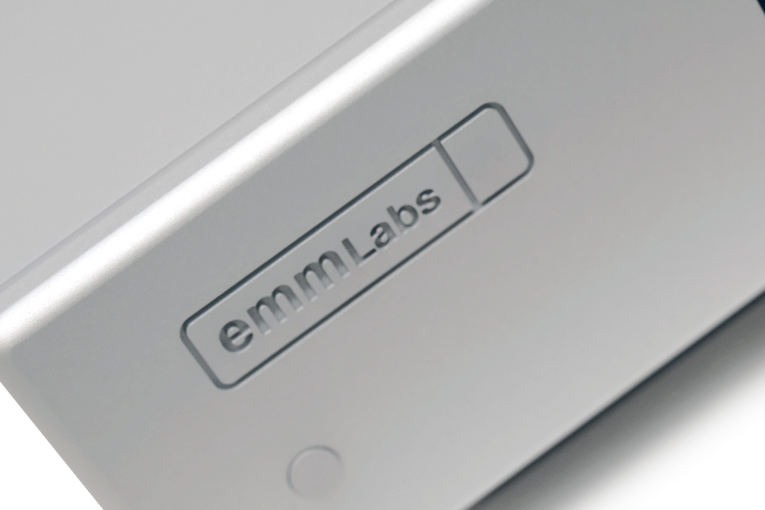
As I’ve stated before, my system doesn’t change often. I rarely upgrade components—my preamp is over 20 years old! The last time I made a component change that utterly knocked my socks off was when I purchased my Aurelia Cerica XL speakers. Adding these speakers to my system resulted in a feeling of awe due to their surreal imaging combined with excellence right through the audio spectrum.
But generally, components come in, I review them, and they go back out. My system sounds great, and changes to its configuration are usually incremental. But here, the DS 003 System shifted that paradigm once again. And now I’m turned on my head once more by the DS-EQ1, as I come to the realization that there’s far, far more information contained within a record’s grooves than I had ever really anticipated.
Within audio, more money doesn’t necessarily mean more better. More money can result in better sound quality, but there’s no guarantee. Here though, with the DS-EQ1, there’s no question in my mind that the nine large above the cost of the DS 003 phono stage is more than just justified. On build quality alone, the DS-EQ1 far surpasses the DS 003, and once you factor in the improvement to the bass, the refinements up in the top end, and the holy-shit imaging, the DS-EQ1 stacks up as one of the best components I’ve come across. If you really, truly want to find out where a vinyl rig can take your system, man, oh man, do you ever need to check out the DS-EQ1 combined with one of DS Audio’s cartridges.
. . . Jason Thorpe
jasont@soundstagenetwork.com
Note: for the full suite of measurements from the SoundStage! Audio-Electronics Lab, click this link.
Associated Equipment
- Analog sources: VPI Prime Signature turntable; EAT Jo No8, Sumiko Celebration 40, DS Audio DS 003 cartridges.
- Digital source: Logitech Squeezebox Touch.
- Phono stages: Aqvox Phono 2 CI, iFi Audio iPhono 3 Black Label, Hegel Music Systems V10, DS Audio DS 003.
- Preamplifier: Sonic Frontiers SFL-2.
- Power amplifier: Bryston 4B3.
- Integrated amplifier-DACs: Hegel Music Systems H120, Eico HF-81.
- Speakers: Focus Audio FP60 BE, Estelon YB, Aurelia Cerica XL.
- Speaker cables: Audience Au24 SX, Nordost Tyr 2.
- Interconnects: Audience Au24 SX, Furutech Ag-16, Nordost Tyr 2.
- Power cords: Audience FrontRow, Nordost Vishnu.
- Power conditioner: Quantum QBase QB8 Mk.II.
- Accessories: Little Fwend tonearm lift, VPI Cyclone record-cleaning machine, Furutech Destat III, Musical Surroundings Fozgometer azimuth meter, DS Audio ION-001 Vinyl Ionizer.
EMM Labs DS-EQ1 Optical Phono Preamplifier
Price: $12,500.
Warranty: Five years, parts and labor.
EMM Labs and Meitner Audio
119 – 5065 13th Street S.E.
Calgary, Alberta
Canada T2G 5M8
Phone: (403) 225-4161
Fax: (403) 225-2330
Email: info@emmlabs.com
Website: www.emmlabs.com






















